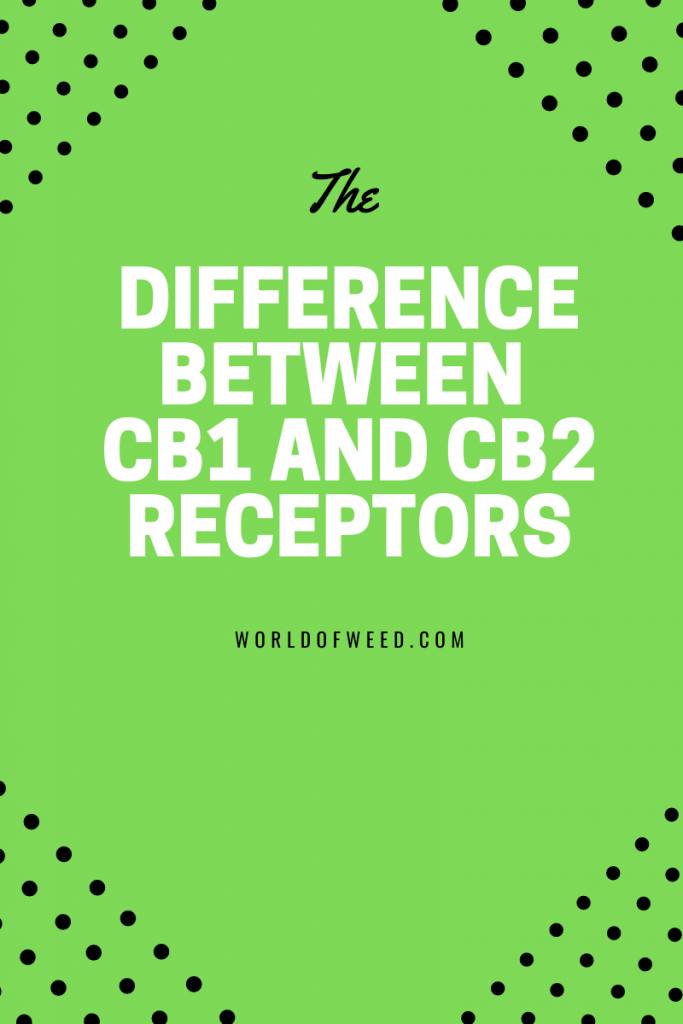The CB1 and CB2 Receptors Comparison Guide
Your brain uses neuroreceptors to process cannabinoids like THC and CBD. These neuroreceptors are responsible for both natural cannabinoids (endocannabinoids) and plant cannabinoids (phytocannabinoids), and they make up the delicate chemical-signaling system called the endocannabinoid system.
In this comparison guide, we’ll cover the brain’s CB1 and CB2 receptors, explain how these neuroreceptors play a role in the effects of cannabis, and how you can “reset” them if you’re concerned about your weed tolerance.

First, what is the endocannabinoid system?
The endocannabinoid system is a vital regulatory system that automatically controls the stream of natural cannabinoids every moment of every day. When we add cannabinoids by consuming cannabis, the endocannabinoid system processes these phytocannabinoids alongside the others.
This system is responsible for controlling numerous bodily processes, such as mood, hunger, and sleep. There seem to be few aspects of human physiology that are outside of the direct influence of the endocannabinoid system.
The endocannabinoid system and receptors
The primary parts of the endocannabinoid system are CB1 and CB2 cannabinoid receptors. These receptors are what process the THC you consume when you hit the bong. Without them, particularly the CB1 receptor, you would never get high, regardless of how much you smoked. Other cannabinoids, on the other hand, don’t interact with these receptors at all.
The acronym “CB1/2” stands for cannabinoid receptor 1” or “cannabinoid receptor 2”, a label applied by scientists early on in the start of cannabis research. Along with the CB2 receptor, the CB1 receptor is a primary focus of the THC introduced into the body.
How are the CB1 and CB2 receptors different?
While they are similar in structure, the CB1 and CB2 receptors differ greatly in function and location. The CB1 receptors are virtually all packed into the brain, impacting the levels of endorphins, like dopamine, you receive. The CB2 receptors are found more in the peripheral nervous system, modulating pain and inflammation.
Within the brain, the CB1 receptors are mostly in the core regions such as the basal ganglia, hippocampus, and cerebellum. These areas of the nervous system are most closely connected to feelings of euphoria and “being high” or intoxicated. Even though there are CB2 receptors in the brain, they are more evenly dispersed throughout the length of the nervous system than the CB1 receptors.
The function of the CB1 and CB2 receptors
In a nutshell, the CB1 receptors are what get you high, while the CB2 receptors alleviate pain. CB1 receptors are recreational, and CB2 receptors are therapeutic. Yes, there is a lot more to it than that, but that gets to the center of it. If you want to get high, use the cannabinoids that target the CB1 receptors.
These regulate the flow of the endorphin neurotransmitters such as dopamine, serotonin, and glutamate. The CB1 receptors continuously perform this function, regardless of whether you’ve recently smoked or not.
That being said, the most effective way to activate these receptors is to use THC or a THC-variant. Inhaling your THC by smoking or dabbing is the best way to do this.
The most THC-packed strains in Tacoma are:
Jack Herer – 27.80%-31.80% THC
Dutchberry – 22.90%-26.90% THC
CB1 and CB2 receptors and your weed tolerance
If you’re a big stoner and consume cannabis on a frequent basis, your CB1 receptors can “downregulate”, or become less sensitive. This downregulation can last for up to 24 hours after smoking just one joint and can last for much longer in the case of frequent consumption.
While that sounds all scary, the good news is that downregulated CB1 receptors are able to fully upregulate within 4 weeks of the cessation of THC use. The downregulation is the biochemical process that causes what we call “weed tolerance.”
The more you consume, the more difficult it can be to get high.
But, the moment you stop consuming the THC, your cannabinoid receptors will begin to fix themselves without any action on your part. Within that four-week span of time, the brain’s CB1 receptors will be back in their original state.
For some people, even just a few days of non-consumption will produce a more intense high after they smoke again.
Regain THC Sensitivity Without a T-Break
If completely putting a stop to smoking for an entire month (we totally get you on that!), try puffing on some CBD-rich cannabis products instead.
We recommend dabbing some Renegade RX Distillate, taking a CBD 4:1 Capsule, or enjoying some Ginger CBD Mints.
Disclaimer: Marijuana has intoxicating effects and may be habit-forming. Smoking is hazardous to your health. There may be health risks associated with consumption of Marijuana. Marijuana, in any form, should not be used by individuals that are pregnant or breastfeeding. Marijuana is intended for use only by adults 21 and older. Keep out of reach of children. Marijuana can impair concentration, coordination, and judgment. Do not operate a vehicle or machinery under the influence of this drug. This product may be unlawful outside of Washington State.








